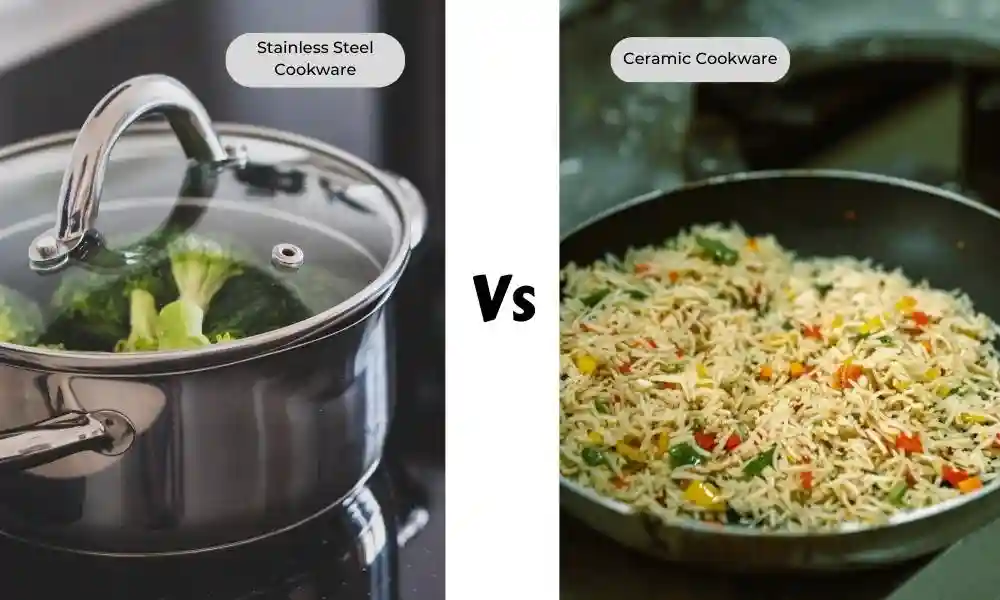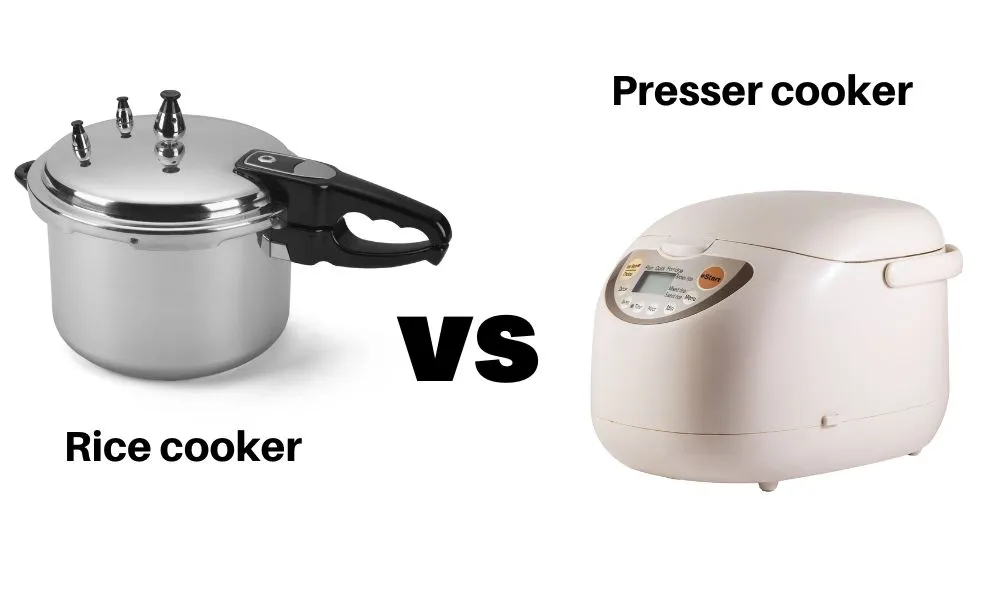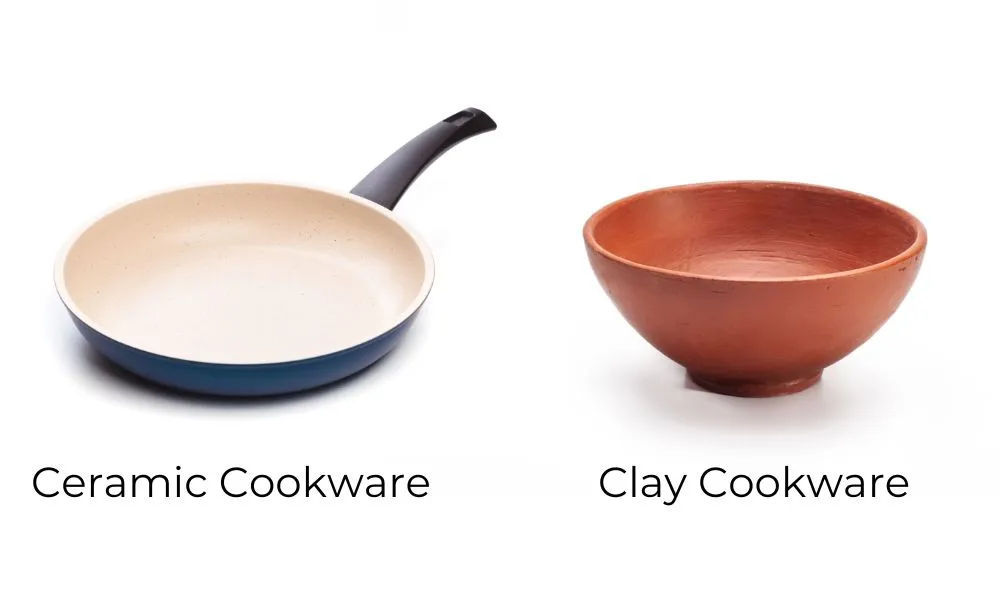Looking for the best cookware can be a daunting process, particularly when trying to choose between ceramic and stainless steel options. Both are durable, healthy, and versatile, but which one is ideal for your kitchen? In this article, we will help you make the best decision by comparing ceramic cookware and stainless steel cookware and highlighting the pros and cons of each type. In this Blog, we will discuss ceramic vs stainless steel cookware, our test results, researched tropics, and which one you should go for.
Table of Content
- Ceramic Vs Stainless Steel Cookware
- Stainless Steel Cookware
- stainless steel cookware pros and cons
- Ceramic cookware
- ceramic cookware pros and cons
- Ceramic Myth #1: It Doesn’t Last Long
- Ceramic Myth #2: It’s Not Safe
- Ceramic Myth #3: It’s Difficult to Clean
- Which is better: ceramic or stainless steel cookware?
- Conclusion
- FAQs- (Frequently Asked Questions) About Ceramic Vs Stainless Steel Cookware
Ceramic Vs Stainless Steel Cookware
| Feature | Ceramic Cookware | Stainless Steel Cookware |
|---|---|---|
| Durability | Durable if handled properly and not exposed to | Durable, but may get scratches and dents over time |
| temperature | extreme temperature changes and sudden impacts | – |
| Heat Conductivity | Slower to heat up but retains heat well | Faster to heat up but not as good at retaining heat |
| Non-stick Properties | Non-stick surface without harmful chemicals | Some stainless steel cookware may have non-stick properties |
| Ease of Cleaning | Hand-wash recommended with non-abrasive sponge | Dishwasher safe, but may leave water spots and streaks |
| Versatility | Versatile and can be used for different types of | Good for high-heat cooking and searing |
| Cooking | cooking such as baking, roasting, and sautéing | – |
| Price | Prices may vary based on the brand and quality | Usually more affordable than ceramic cookware |
Stainless Steel Cookware

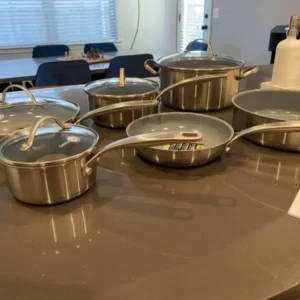
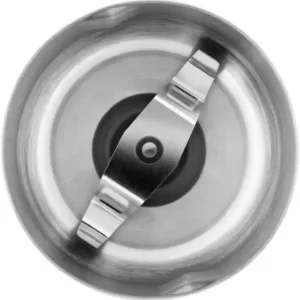
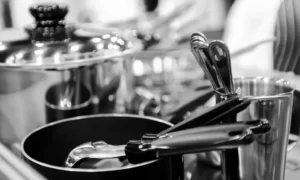
What is stainless steel cookware?
Stainless steel is a common material for cookware, and it is an alloy of various metals, with the most widely used type in cookware being 18/10 stainless steel, which contains 18% chromium and 10% nickel. Stainless steel has many unique features, including resistance to corrosion and heat, but it is not an excellent heat conductor. Therefore, most stainless steel cookware has an aluminum core sandwiched between layers of steel to enable it to heat up quickly and at high temperatures. The quality of stainless steel cookware can vary greatly depending on the amount and type of alloy used in its construction.
stainless steel cookware pros and cons
Pros:
- Durable and long-lasting
- Non-reactive, meaning it won’t alter the flavor of your food
- Can be used on any type of cooktop, including induction
- Easy to clean and maintain
- Provides even heat distribution
Cons:
- Poor heat retention
- Food can stick to the surface if not properly seasoned or oiled
- Handles can become hot and require pot holders or oven mitts
Ceramic cookware
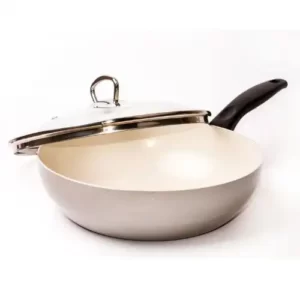
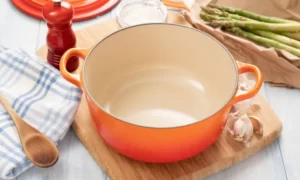
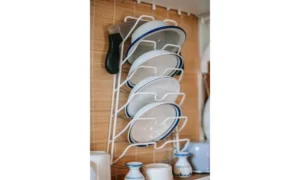

What is ceramic Cookware?
Ceramic cookware is quickly becoming a popular choice among home cooks due to its durability, versatility, and attractive design. The Ceramic cookware is made of natural clay and sand fired at high temperatures to create a non-stick surface that is free of harmful chemicals. The ceramic cookware is heat- and corrosion-resistant, which makes it ideal for cooking on different heat sources, including gas, electric, and induction stovetops, and it can go from stovetop to oven without switching cookware.
ceramic cookware pros and cons
Pros:
- Non-toxic and chemical-free
- Non-stick surface
- Easy to clean
- Retains heat well
- Available in a variety of colors and designs
Cons:
- Not dishwasher safe
- Can be more expensive than other types of cookware
Ceramic Myth #1: It Doesn’t Last Long
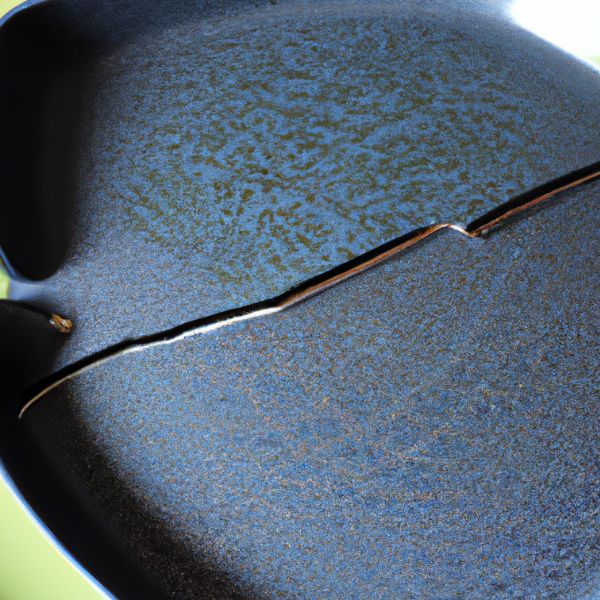
The Ceramic cookware is incredibly durable and can last for years if you take proper care of it. Follow the manufacturer’s care instructions to avoid damage, and avoid using metal utensils that can scratch the surface.
Ceramic Myth #2: It’s Not Safe
Modern ceramic cookware is free of harmful chemicals such as lead and cadmium, making it a safe option for cooking acidic foods such as tomato-based sauces.
Ceramic Myth #3: It’s Difficult to Clean

Ceramic cookware is easy to clean with soap and water due to its non-stick surface, and there’s no need to soak or scrub the surface to remove food particles. However, abrasive cleaners or pads should be avoided to prevent scratches.
Which is better: ceramic or stainless steel cookware?
Choosing between ceramic and stainless steel cookware depends on your needs and preferences. If you want cookware that is versatile, easy to clean, and free of harmful chemicals, ceramic cookware is an excellent option. It’s also an excellent choice if you want cookware that can go from stovetop to oven without requiring you to switch cookware.
Heat Distribution
Ceramic cookware is a better heat conductor than stainless steel, meaning you can cook food evenly without hot spots, which is perfect for preparing delicate meals.
Durability
Ceramic cookware is scratch-resistant, which means you don’t have to worry about damaging it with metal utensils, and it can last a long time with proper care. Ceramic cookware is also oven-safe, making it an ideal choice for dishes that require both stovetop and oven cooking.
Ease of Cleaning
Ceramic cookware is easy to clean, and most models are dishwasher-safe, but it’s crucial to check the manufacturer’s instructions before putting your ceramic cookware in the dishwasher. Some models may require hand-washing to maintain their appearance and performance.
Maintenance and Cleaning
Both ceramic and stainless steel cookware are relatively easy to clean and maintain, but they do have some differences. Ceramic cookware is typically easier to clean because of its non-stick surface. However, you should avoid using abrasive cleaning tools, as they can scratch the surface. Stainless steel cookware, on the other hand, may require more effort to clean due to its polished surface, but it is generally more resistant to scratches.
Health and Safety
When it comes to health and safety, both ceramic and stainless steel cookware are safe options. Ceramic cookware is made of natural materials and does not contain harmful chemicals like PFOA, PFAS, and cadmium. Stainless steel cookware is also safe, as long as it is made from high-quality materials that do not contain harmful additives. However, some people may be allergic to nickel, which is present in some types of stainless steel cookware.
Design and Style
Ceramic cookware is often available in a wider range of colors and designs than stainless steel cookware. This makes it a great option for those who want their cookware to match their kitchen decor. Stainless steel cookware is typically more basic in design, but it has a classic and timeless look that works well in any kitchen.
Eco-Friendliness
Both ceramic and stainless steel cookware are eco-friendly options. Ceramic cookware is made from natural materials and does not contain harmful chemicals that can harm the environment. Stainless steel cookware is also eco-friendly, as it is recyclable and can be reused for many years.
Price and affordability
When it comes to price, stainless steel cookware is generally less expensive than ceramic cookware. However, the price can vary depending on the quality of the materials used in the construction of the cookware. Ceramic cookware is often more expensive due to the cost of the manufacturing process and the use of high-quality materials.
Conclusion
In conclusion, both ceramic and stainless steel cookware have their own unique advantages and disadvantages. When making your decision, it’s important to consider your cooking needs, preferences, and budget. Ceramic cookware is a great option if you’re looking for cookware that is versatile, easy to clean, and free of harmful chemicals. Stainless steel cookware is a great choice if you’re looking for cookware that is durable, versatile, and can handle high heat. Ultimately, the choice between ceramic and stainless steel cookware is a personal preference and depends on your individual needs.
People Also Ask:
- ways to cook on ceramic cookware
- types of ceramic cookware
- ceramic cookware cooking tips
- Ceramic Cookware Techniques
- ceramic cookware dos and don’ts
- ceramic cookware mistakes
- Ideas for Using Ceramic Cookware
- DIY Ceramic Cookware
FAQs- (Frequently Asked Questions) About Ceramic Vs Stainless Steel Cookware
What are the main differences between ceramic and stainless steel cookware?
Ceramic cookware has a non-stick surface and is more fragile, while stainless steel cookware is more durable and doesn’t have a non-stick surface.
Which one is easier to clean – Ceramic cookware or stainless steel cookware?
Ceramic cookware is easier to clean due to its non-stick surface.
Can ceramic cookware withstand high heat?
Ceramic cookware can withstand high heat, but it may crack or chip if exposed to sudden temperature changes.
Is stainless steel cookware safe for cooking?
Yes, stainless steel cookware is safe for cooking as it doesn’t contain any harmful chemicals.
Which one is more expensive?
Ceramic cookware is generally more expensive than stainless steel cookware.
